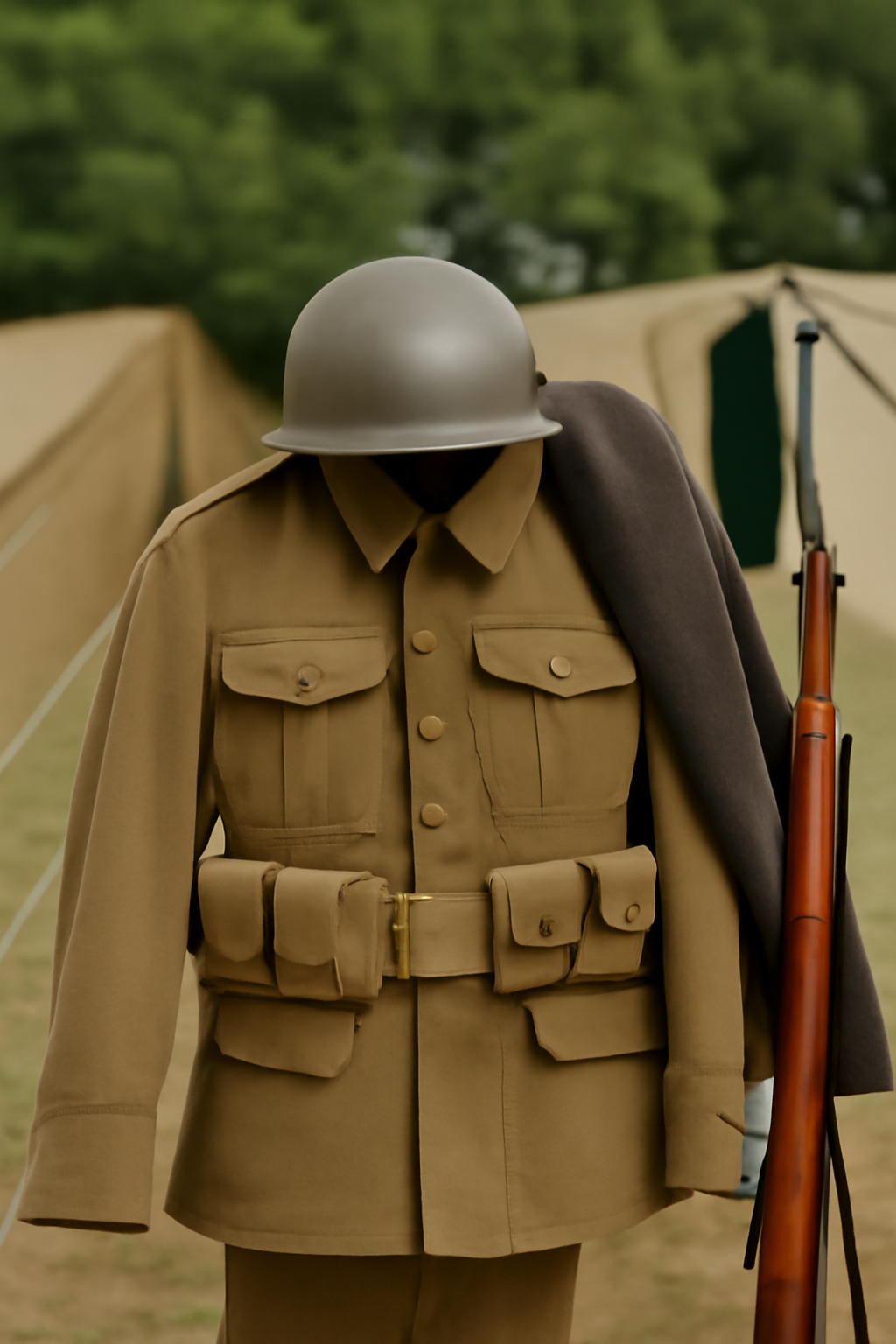
The Ultimate Guide to WWI Reenactment Gear: Authentic World War One Reproduction Uniforms
Published on May 31, 2025
The Ultimate Guide to WWI Reenactment Gear: Authentic World War One Reproduction Uniforms
World War I reenactments have grown in popularity over recent years as more people seek to honour history by reliving the experiences of soldiers who fought in the Great War. But to truly capture the essence of WWI, having authentic and high-quality WWI reenactment gear is crucial. This includes everything from meticulously reproduced uniforms to realistic equipment that completes your portrayal.
In this comprehensive guide, we'll cover the essentials of World War I reproduction uniforms, key WW1 reenactment equipment, and how to get started in the fascinating world of WWI reenactment.
Why Authentic WWI Reenactment Gear Matters
Historical reenactment is about more than just dressing up — it's about education, remembrance, and respect for those who served. Wearing accurate WWI uniforms reproduction helps reenactors represent the soldiers' experiences truthfully, enhancing public appreciation for the history.
Authentic gear is designed to look and feel like the original uniforms used during WWI, made from period-appropriate fabrics and designed with detailed craftsmanship. This helps to avoid the pitfalls of cheap costumes that can break immersion and sometimes damage the reputation of reenactment groups.
Essential WW1 Reenactment Equipment
When preparing for a WWI reenactment, you need more than just a uniform. Here's a breakdown of the critical equipment:
1. Uniforms
The cornerstone of any reenactor's kit is the uniform. For WWI, this typically includes:
- Tunic and Trousers: Made from wool or wool-blend fabrics in the correct colour (such as khaki for British troops or feldgrau for German forces).
- Caps and Helmets: Authentic replicas of service caps or helmets like the iconic British Brodie helmet or the German Pickelhaube.
- Footwear: Period-appropriate boots or ankle-high leather shoes.
- Insignia and Badges: Rank badges, regimental patches, and buttons that accurately reflect the soldier's role and nationality.
2. Equipment and Gear
Authenticity extends beyond clothing. Essential WWI gear items include:
- Webbing and Belts: Used to carry ammo pouches, bayonets, and other small equipment.
- Backpacks and Satchels: Reproduction packs that resemble those used by soldiers to carry their supplies.
- Weapons (Replica): Replica rifles, bayonets, and sidearms for display and demonstration purposes.
- Personal Items: Mess tins, water bottles, and trench tools.
3. Accessories
Small details complete the look and provide functionality:
- Gloves and Scarves: Often made of wool to keep warm in trenches.
- Gas Masks and Bags: Replicas of WWI gas masks, critical for portraying soldiers during chemical warfare.
- Puttees: Cloth strips wrapped around the lower legs for protection and support.
Choosing the Right World War One Reproduction Uniforms
Not all reproduction uniforms are created equal. When selecting your WWI uniform, consider:
- Historical Accuracy: Look for suppliers who follow original patterns and materials.
- Comfort and Durability: Since reenactments can last all day, the gear must be wearable and robust.
- The authenticity of Color and Detail: Even minor differences in colour or stitching can impact realism.
- Supplier Reputation: Purchase from trusted reenactment specialists like those featured on paddelaters.com.
Expanding Your Reenactment: WW2 German Reenactors
While this guide focuses on WWI, many reenactors also explore WWII, especially WW2 German reenactors. This subgroup requires its own set of reproduction uniforms and gear but shares the same dedication to accuracy and detail.
If you're interested in expanding your reenactment repertoire, consider researching and acquiring authentic WWII German uniforms, helmets, and equipment—each with its distinct features and historical context.
Tips for New WWI Reenactors
Starting your reenactment journey can be overwhelming. Here are some helpful tips:
- Join a Reenactment Group: Experienced members can offer advice and help with gear.
- Research Thoroughly: Study period photographs, documents, and official uniform regulations.
- Invest Gradually: Start with basic uniforms and add equipment over time.
- Respect the History: Always remember the real sacrifices behind the uniforms.
Where to Find Quality WWI Reenactment Gear
Finding reliable sources is key to building an authentic WWI kit. Websites like paddelaters.com specialize in high-quality World War Two reproduction uniforms and related gear. They offer a wide selection, from tunics and helmets to webbing and accessories, crafted to meet reenactors' demands for historical fidelity.
Conclusion
Wearing authentic WWI reenactment gear is a powerful way to connect with history, honour those who served, and educate others. From carefully crafted World War I reproduction uniforms to essential WW1 reenactment equipment, every piece contributes to an immersive and respectful portrayal.
Whether you’re new to reenacting or expanding your collection with WWII German gear, the right equipment is the foundation of your experience. Explore the best gear available and step back in time with confidence and pride.
